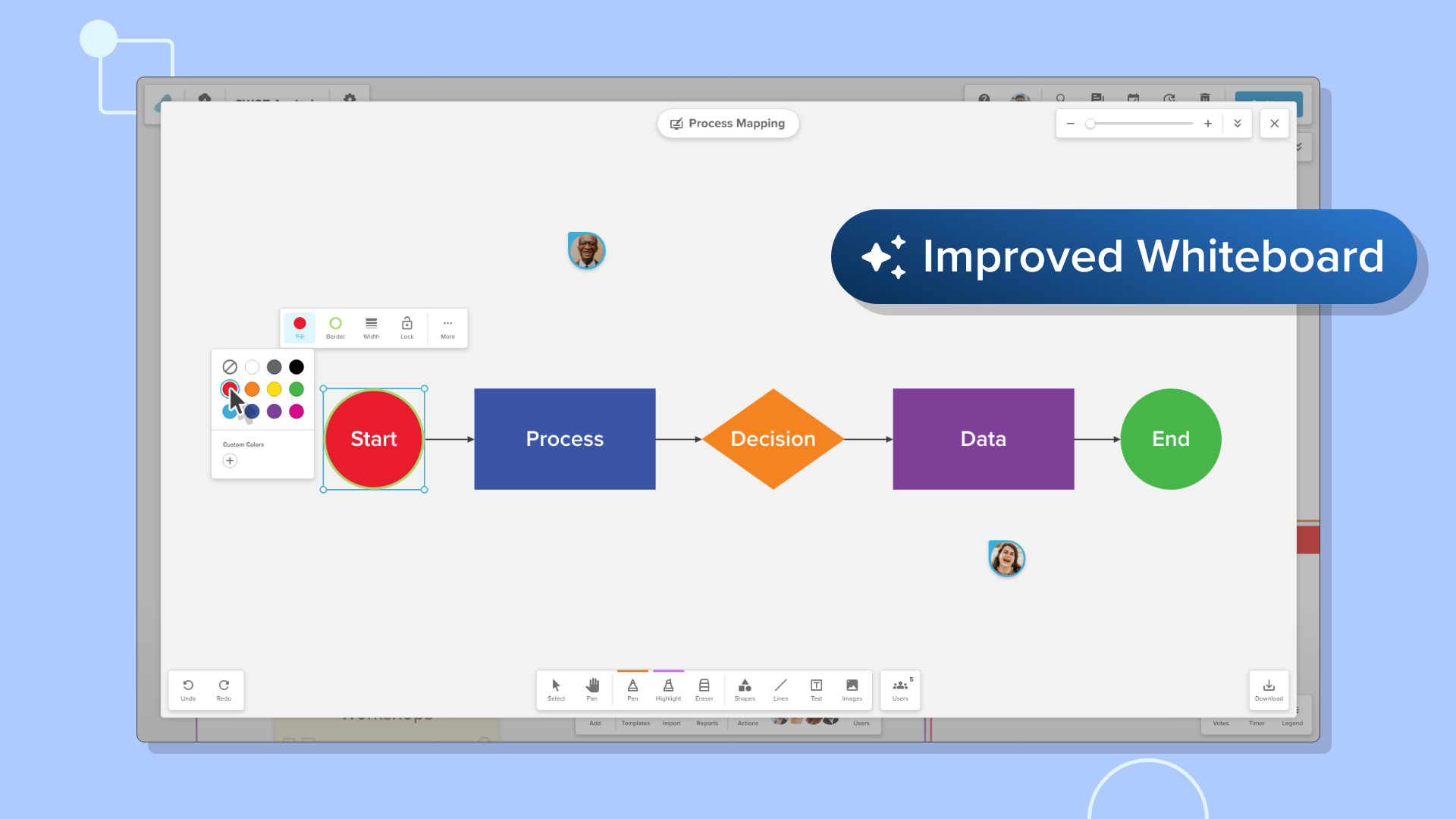Digital Innovation In Healthcare & Pharmaceuticals
Image from Pexels
Healthcare providers across the city trying to operate without without test results, prescription services, and patient records for extended periods. Patients waiting for ridiculously long times to see a doctor, dealing with delayed treatment, and faced with doctors defaulting back to pen and paper. It might sound like the worst-case-scenario for the healthcare industry, but it was a reality in the Greater Manchester area in 2022.
As technology advances all around us, healthcare providers must continually innovate to not only provide the appropriate care for all patients, but also to stay afloat in a results-driven economy. Between cybersecurity threats, disruptive innovators, and the failure of archaic systems, doing things the way they’ve always been done is not an option. However, roughly 80% of hospitals still continue to rely on outdated tech like pagers.
In this article, we will discuss how digital innovation is disrupting the healthcare and pharmaceutical industry, the challenges and benefits that come with it, and how you can leverage digital innovation to create and maintain a competitive advantage.
Benefits of Innovation in Healthcare
Digital innovation offers numerous potential benefits that streamline processes, reduce costs, and improve patient outcomes.
For instance, healthcare providers are now able to leverage digital solutions such as electronic medical records (EMR) systems to manage patient data more efficiently. Similarly, telemedicine services provide patients with access to care from anywhere in the world at any time.
In addition to improved access and efficiency, digital innovation can help improve accuracy by reducing human error associated with manual processes like transcribing notes or filling out forms.
Automated solutions can also be used for drug development and delivery; for instance, automated pill dispensers can reduce the risk of incorrect dosages as well as provide real-time data about patient adherence.
With the healthcare industry getting more competitive by the day, the opportunity for disruption is both nerve-wracking and full of possibility. Disruptive innovation refers to smaller companies moving in on the lower end of the market. As patients search for low-cost options for routine medical help, there’s lots of space for these kinds of offerings.
To stay ahead of the curve, both new and established healthcare companies should be looking for ways to change the game and cater to a broader population.
Challenges of Innovation
Despite the potential benefits of digital innovation, several challenges must be addressed. For instance, data security and privacy are essential for healthcare providers and pharmaceutical companies to comply with HIPPA (or similar regional) regulations. As such, it is important to ensure that any digital solutions used are properly secured and compliant.
While many healthcare providers have adopted EMR systems, they may lack the resources or expertise to use them effectively, leading to inefficient processes and decreased patient satisfaction.
Similarly, while telemedicine offers improved access for patients in remote areas or those who cannot leave their homes, it is important to ensure that the technology used provides reliable connections and quality care.
The Latest Innovations in Healthcare
To fully embrace digital innovation, it’s important to know what kinds of innovations have already been shaking up the industry. Here are just a few that have already started to change the face of healthcare in recent years.
Telehealth
Telehealth services allow patients to access quality healthcare from the comfort of their homes. This means that they can receive care regardless of geographic location, physical disability, or other circumstances that may prevent them from visiting clinics or hospitals.
During the pandemic, telehealth options were available in 95% of health centers in the United States. These technologies have made it possible to tackle healthcare inequality, effectively communicate with patients pre- and post-operation, and allow patients to safely and accurately self-diagnose certain illnesses.
Biosensors
Biosensors are devices that measure, store, and transmit data about a variety of biological processes. These devices can detect changes in the body, such as heart rate or blood sugar levels, and transmit this information to healthcare providers.
This data can be used to track patient health over time or respond quickly in emergencies. Biosensors have also revolutionized drug delivery; for instance, inhalable insulin is now available thanks to biosensor technology.
When it comes to treating chronic illness, biosensors make it possible for patients to remain home, and ultimately lead to a 52% decrease in the cost of care. With implementation being so easy and impactful, it’s likely that biosensors will become a staple for healthcare across the board.
3D-Printers
3D printing in healthcare is expected to be worth 10.8 billion by 2029. From surgical tools to prosthetics and beyond, it’s changing the entire makeup of hospital care. During the pandemic, personal protective equipment was even able to be printed on demand.
Education is also being affected by 3D printing, as 100% anatomically correct models are made with ease, providing students with critical practical experience without the need for donors or the pressure of an emergency situation.
Health Trackers
Trackers such as fitness monitors and smartwatches have become increasingly popular, with one-in-five Americans using them in 2020. These devices allow users to track their activity level, heart rate, and sleep patterns. By collecting this data over time, healthcare providers can get a better understanding of a patient’s health - and potentially detect any changes in their condition.
With the help of these health trackers, it’s possible for people to volunteer information for health research, allowing pharmaceutical manufacturers to study everything from sleep habits and diets to congestive health patterns.
How to Start Innovating
Digital innovation requires a coordinated effort between healthcare providers, pharmaceutical companies, and tech companies. Each party must understand the needs of the other to ensure that any digital solution meets its intended purpose.
It’s essential to invest in security measures such as encryption and authentication protocols to protect patient data from unauthorized access or misuse. Every move towards digitization should be accompanied by extensive cybersecurity.
Utilizing tools like Stormboard that take security as seriously as you do is vital. We are consistently auditing and improving our security measures to include things like single-tenant architecture, two-factor authentication, and high-level encryption.
Healthcare professionals need to keep the ultimate goal of digital health innovation in mind - improving patient care and strengthening the systems that provide it. User-friendliness, personalization, practicality, affordability, accessibility, and convenience are all essential components of successful digital tools.
Furthermore, interventions must be tailored to account for cultural differences as well as physical and environmental factors such as social determinants of health. For this reason, diverse stakeholders should be engaged throughout the development process and have a simple way to communicate and effectively collaborate with one another.
Final Thoughts
With digital innovation continuing to revolutionize healthcare and pharma, it's clear that the opportunities for better patient experiences and improved outcomes are immense. However, to ensure success, organizations must consider the challenges of introducing new technologies while also complying with regulatory requirements.
With thoughtful planning, the proper tools, and a commitment to embracing change, we can look forward to continued advancements in this field that will benefit both patients and providers alike.
Life-changing innovation starts with bold ideas.
Stormboard is built to drive innovation, challenge conventional approaches, and spark revolutionary ideas. Click the button below and get in touch with a Stormboard expert that can explain how some of the world’s biggest pharmaceutical companies are already leveraging Stormboard to advance healthcare worldwide.
About the author:
A programmer by trade, Nick Saraev is a freelance writer and entrepreneur with a penchant for helping people excel in their careers. He's been featured on Popular Mechanics & Apple News, and has founded several successful companies in e-commerce, marketing, and artificial intelligence. When he's not working on his latest project, you can find him hiking or painting.










